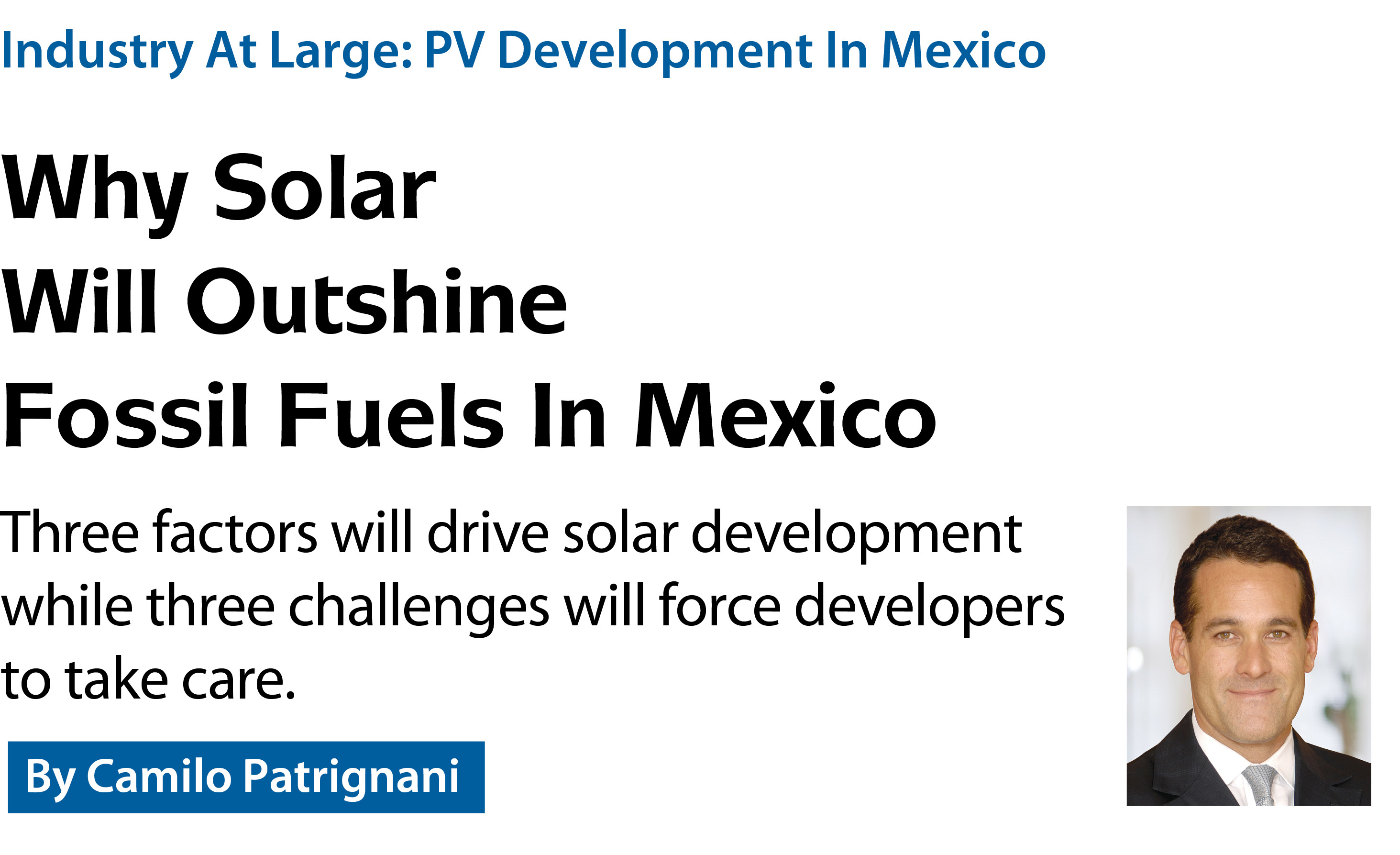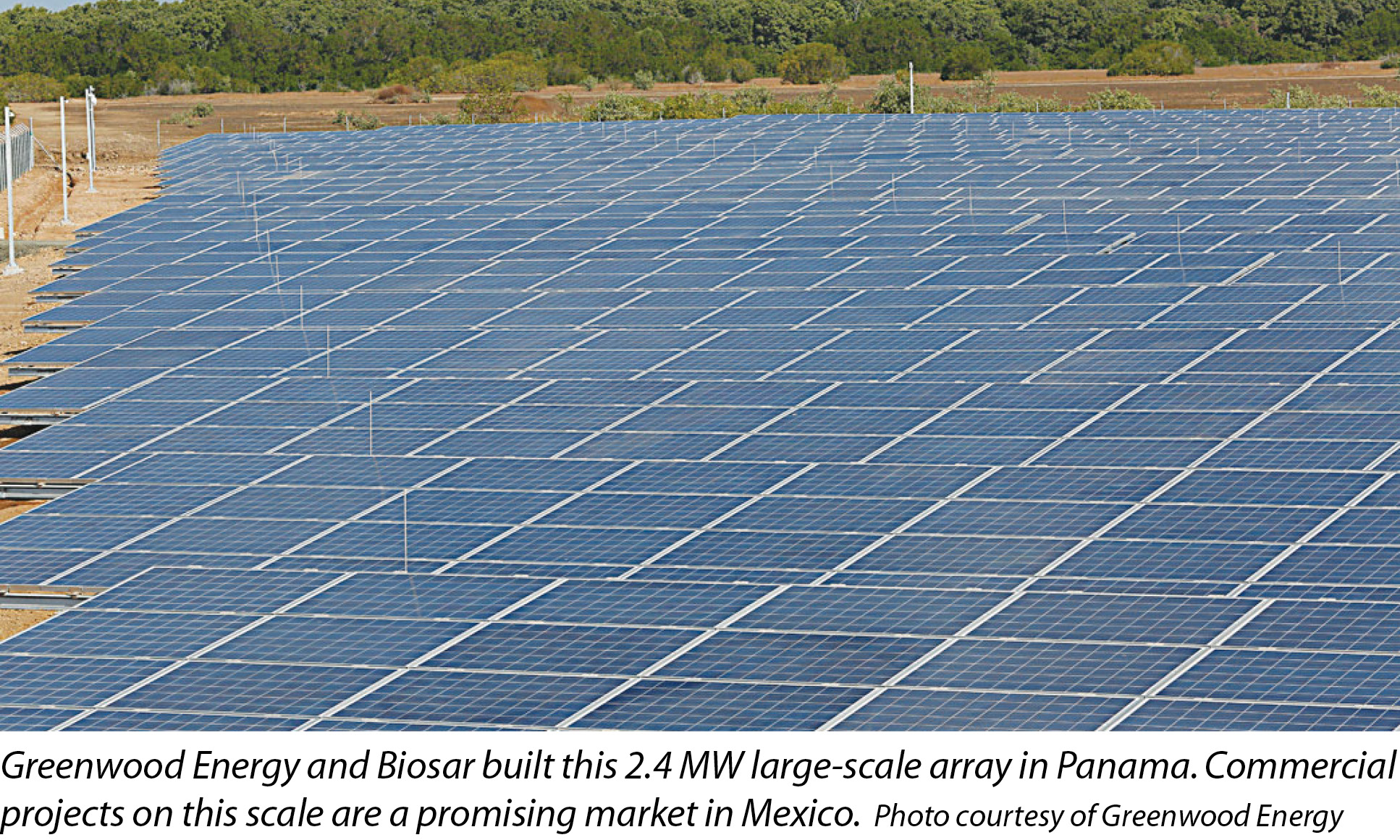

301 Moved Permanently
When Mexico reformed its energy markets to attract foreign investment, analysts focused their bullish outlooks on natural gas and petroleum. And without a doubt, the country will attract billions in new fossil fuel projects.
Nevertheless, Mexico is in a difficult position. Combine high prices for imported natural gas, limited hydropower and coal resources, creaky grid infrastructure, limited renewables capacity and energy demand growing 4% annually and you get electricity prices rising roughly 8% to 10% per year.
It is easy to think fossil fuels will dominate Mexico’s energy investment, but that misses a major growth market - distributed solar photovoltaics. As an active developer in Mexico, I see three ways solar can help solve the country’s energy challenges.
First, thinking oil and gas will meet Mexico’s energy needs overlooks their development timelines. Finding new reserves, developing projects and building pipelines takes years, not months. Sure, in 10 years sufficient fossil fuel resources should be online to meet energy demands, but what if electricity demand outpaces capacity additions before then, or what if Mexico decides to export its new supplies?
Fortunately, solar power can fill this yawning gap between demand and supply in a short time frame. Around 24 GW of solar projects are in Mexico’s development pipeline, waiting for reform to be converted into capacity auctions, which I expect to start happening within the next year.
At that point, efficient construction practices can get solar energy contributing to power supply within months. In fact, 97 MW of solar are expected to go online this year, rising to 3.2 GW by 2018.
Second, creating a fossil fuel-
reliant energy system is not economically sustainable. The first blocks of fossil fuel resources may be easy to reach and affordable to develop, but once the low-hanging fruit is gone, unconventional resources become more expensive. Relying on fossil fuels may, ironically, lock Mexico into a future of rising energy prices.

Compare that volatile outlook to solar’s stability. Module prices are at historic lows, and Mexico has one of the world’s highest levels of solar irradiance, creating consistently strong output. Customers know exactly what their solar system will cost up front, and once built, they lock in decades of price stability and energy security at costs below grid averages. For context, Greenwood Energy, ILIOSS and Schneider Electric are now developing commercial solar projects at up to 20% below grid prices.
Third, Mexico’s grid is aging. It has insufficient transmission capacity to meet current demands or efficiently move electricity across long distances. Unlike the U.S., smart grid technology has not been installed, creating an estimated 15% line loss in 2012. Distributed solar can leapfrog these shortcomings by providing reliable electricity in close proximity to demand.
So how will this opportunity play out? I expect new development to center on 150 kW to 5 MW capacity projects for the largest companies in Mexico, because these are the consumers with the largest power demands and the most to gain from long-term power prices.
Businesses represent 65% of the country’s total electricity sales, creating vast opportunity. Our Mexican development partner ILIOSS is currently installing 33 MW of new projects for retailer Tiendas Soriana; Cinepolis, the largest cinema chain in Latin America; and other big customers.
After large corporate entities, solar will spread to small and medium-size enterprises for similar reasons: demand and price. However, the residential market will take years to mature.
Unlike in the U.S., where rooftop solar is already at grid parity in many regions, residential solar doesn’t make much sense today because Mexico’s government subsidizes the electricity bills of around 80% of homeowners.
Face up to the challenges
While solar enjoys favorable advantages, I’d be remiss if I didn’t mention three challenges facing developers in Mexico’s market, starting with the core of any deal - customers.
Unfamiliarity is the first challenge facing solar developers. Mexicans are accustomed to having one state-owned utility, so the idea of a 20-year power-purchase agreement (PPA) with a new power company is a foreign concept.
Once developers get over that initial hump, they’ll have to consider contract rates. Will a 20-year contract at $0.10/kWh with an escalator clause provide the most competitive price over its duration?
Indeed, setting the right escalator is critical to success given that the equipment is paid in U.S. dollars and the PPAs are usually in local currency. Escalators should ideally blend a minimum fixed price with local inflation and/or local power prices. But customers may also feel a need to hedge, much as they might with conventional power purchases. If inflation and power prices rise, is a set rate through a fixed escalator or an unknown rate tied to the market better? It’s definitely a balancing act.
Once the customer is convinced, developers will face their second challenge: Securing long-term debt financing. As stated above, Mexican PPAs will likely be in pesos, which may lose value compared to investment capital funded in dollars.
This creates a currency mismatch, so developers should lock in debt financing for at least 20 years at a reasonable interest rate. This is a tricky proposition in pesos because they’re more expensive in long-term loans and rely on multilateral lenders. Mexico could smooth this process out by developing the local lending market or working to flatten interest rate curves.
Ironically, solar’s third challenge in Mexico is the same reform that created a competitive wholesale market for renewables. Neither foreign investment nor the country’s ambitious 35% by 2024 non-fossil energy target will happen without a credible clean energy credit (CEC) market and/or well-structured capacity auctions.
Reform has created the ability to issue and trade CECs, but market mechanisms are still being developed, and they’ll be critical to new capacity. Many of the renewable regulatory schemes are administrative resolutions that can be modified over time, creating long-term uncertainty.
Consider lessons from renewable energy credit (REC) markets in the U.S. In New Jersey, the market lost credibility when prices swung hundreds of dollars in just a few years. Massachusetts tried to prevent the same problem with a floor and schedule for RECs, but investors were still paying much lower five-year REC prices for years because they didn’t trust the system.
This problem can be multiplied in a country with corruption issues, so if the REC system is compliance-driven without transparency, Mexico’s RECs may be considered poor investments.
Capacity auctions will face similar challenges. If developers don’t trust the RECs, they will bid higher into auctions to secure favorable economics. But if they bid too high, fewer tenders will be awarded. Likewise, if auction requirements are strict like in Brazil, where local content requirements are enforced, prices will be higher and new projects will be limited.
The devil is truly in the details for Mexico’s energy market reform. How long are PPAs, and in which currency? How transparent and stable is the REC market? What kind of escalators will developers be allowed to use?
Even though there’s risk involved, developers should be extremely bullish on solar power’s potential in Mexico. In time, I think it will be the largest solar market in all of Latin America. S
Industry At Large: PV Development In Mexico
Why Solar Will Outshine Fossil Fuels In Mexico
By Camilo Patrignani
Three factors will drive solar development while three challenges will force developers to take care.
si body si body i si body bi si body b
si depbio
- si bullets
si sh
si subhead
pullquote
si first graph
si sh no rule
si last graph